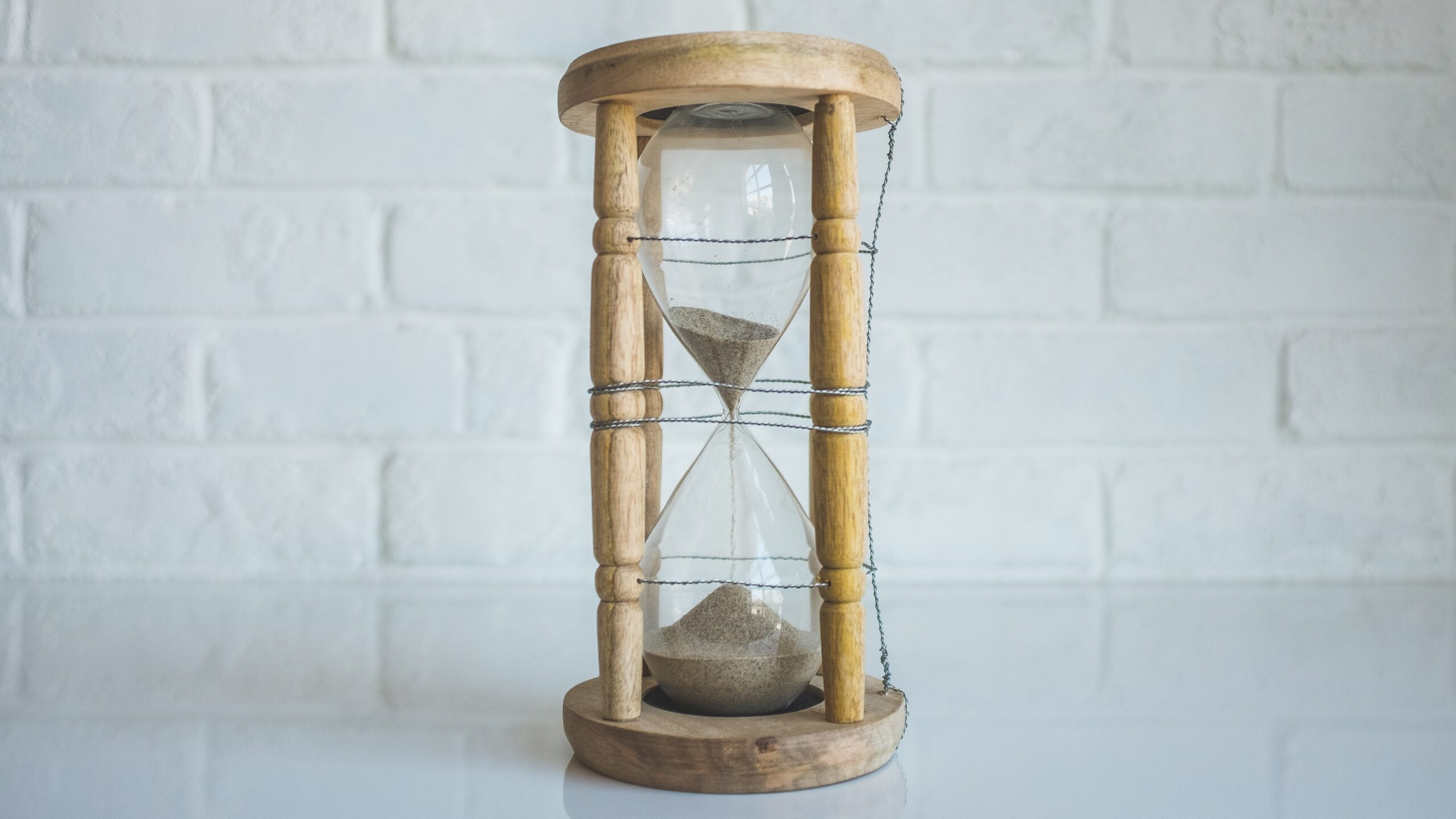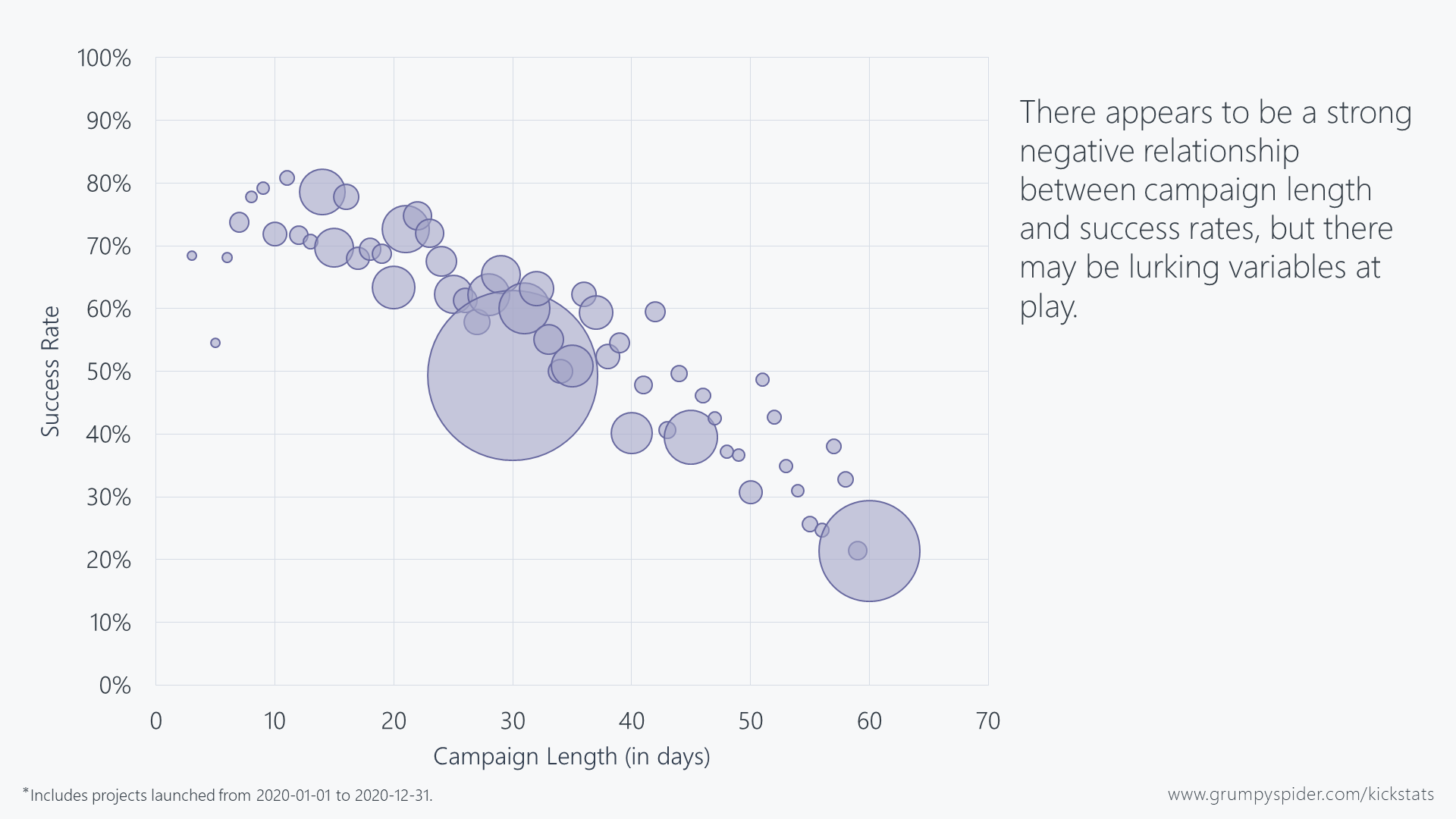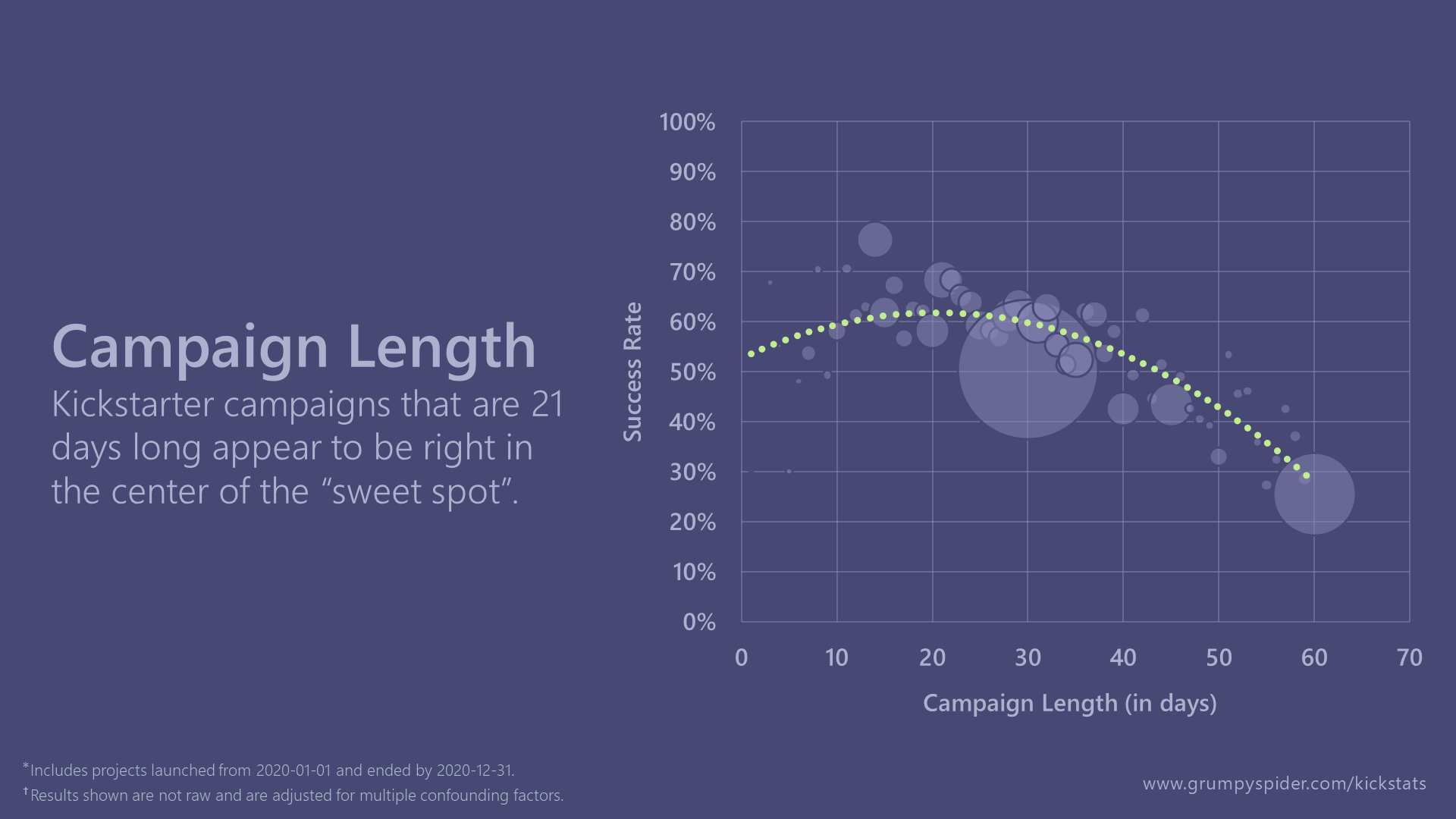
Photo by NeONBRAND on Unsplash
UPDATED 2021-03-17:
This article now includes all Kickstarter campaigns that launched in 2020. The significant increase in sample sizes has resulted in moderate changes to the outcome of our original analysis. Portions of this article have been rewritten to reflect those changes.
Kickstarter itself claims that campaigns lasting 30 days or less are more likely to succeed. I suppose that seems reasonable, but the original claim was made way back in 2011. A lot has changed since then, so I thought it would be best to take a look at it again and see what we come up with.
Arguments
On one hand, longer Kickstarter campaigns mean more time to fund. On the other, longer campaigns also reduce urgency by giving potential backers too much time to decide what they want to do, which may lead to them not backing at all.
Most people would say that reducing urgency has a much stronger effect on success, which means you should avoid longer campaigns. That certainly makes sense, but let’s see if the data supports it.
Analysis
To start, let’s create a simple chart showing Kickstarter project success rates by campaign length (the size of each point represents how many campaigns share that same length).

At first glance, it looks just like what Kickstarter says: longer campaigns hurt your chances of success pretty much across the board. However, we know there may be some lurking variables that we need to account for.
First-Time Creators
We already know that first-time creators have lower success rates than their veteran counterparts. Why does that matter? Well, it may not – at least not on its own – but it could mean that there’s some confounding going on. To check for confounding, we need to show three things:
- That campaign length is linked to success rates
- That creator experience levels are linked to success rates
- That campaign length and creator experience levels are correlated to each other
We’ve already shown the first two. If we can also show that campaign length and experience levels are related to each other, then we have a strong case for saying that they are confounding each other. So let’s graph the average campaign lengths of first-time creators vs veteran creators to see if there is any relationship.

It’s no surprise that first-time creators have longer campaigns in general. They tend to have smaller audiences, and so it’s only natural to increase the length of their Kickstarter campaigns to help make up for that.
This link between creator experience levels and campaign lengths means that we can’t say for sure what’s going on. Do shorter campaigns do better because they’re shorter, or because they tend to be run by more experienced creators? Do longer campaigns do worse because they’re longer, or because they tend to be run by less experienced creators? At this point, we just don’t know.
So how do we separate the two? How do we determine the effect that a campaign’s length has on success without it accidentally being affected by a creator’s experience level as well? We use a little statistical analysis.
I won’t go into all the details here, but essentially, what we want to do is re-weight the data based on the concentration of given variables. In this case, there are comparatively fewer first-time creators with short campaigns. So, we’ll adjust those numbers to make it seem like there are as many with shorter campaigns as there are with longer ones. In this way, we help to remove the effect that experience has on success.
Results
After accounting for the different experience levels of Kickstarter creators, we come up with an interesting relationship between campaign length and success rates.

The negative trend is still there, but now, instead of it being clearly linear, it appears to be better explained with a curve. It seems that the higher success rate of very short campaigns – say, less than two weeks or so – is largely due to a heavy concentration of veteran creators. Once their effect was removed, we see that decreasing your campaign length isn’t always the best idea. At some point, making your campaign too short will begin to hurt you rather than help you.
I think this makes sense. Is it really reasonable to think that shortening your Kickstarter campaign will always help? If that were the case, why not make it one day long, and shoot your chances of success up to 90%?! No, what we see here is that you should shoot for the “sweet spot” – not so long that you remove urgency, but not so short that it’s finished before anyone even realizes it began.
So where is that sweet spot? Apparently somewhere around 2-4 weeks. And right in the middle of that is 21 days, which according to this analysis, is just about the best you can get.
UPDATE: There is now a strong case to be made for either a 17- or 24-day campaign. Why? because of the best day to launch and the best day to end a campaign.
